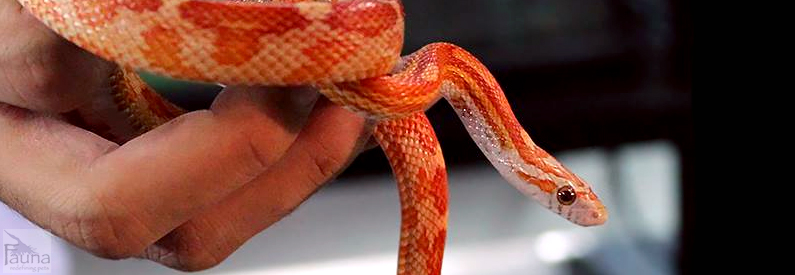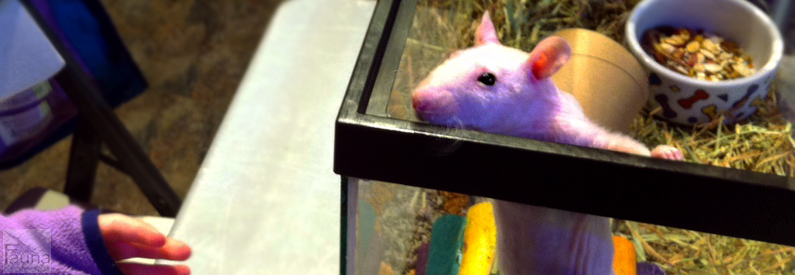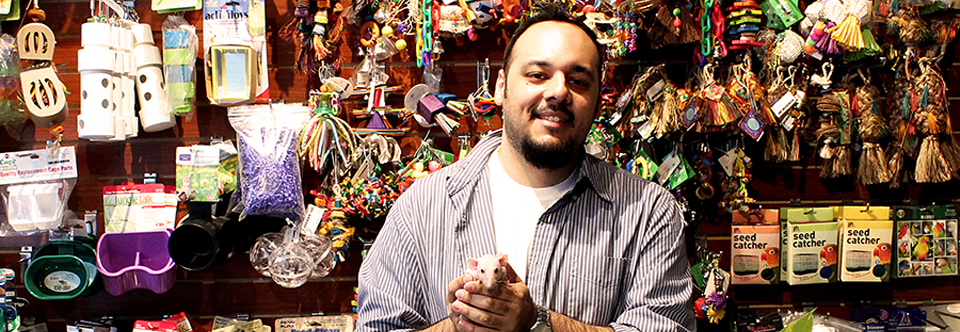
by Fauna | Mar 4, 2014 | Herpetology Club, Programs
February’s Herpetology Club met to learn about and compare the feeding behaviors of several of the reptiles housed at Fauna. The reptiles we focused on were Bearded Dragons, Crested Geckos, and Corn Snakes. Our students were taught well-known terminology such ‘omnivorous’, herbivorous, and ‘carnivorous’, as well as lesser known feeding classifications such as ‘frugivore’, ‘insectivore’, and ‘nectivore’; animals that specialize in eating fruit, insects and nectar respectively. Our club members were also taught that while these terms are a convenient way to group animals according to what they eat, very few of them strictly adhere to their label. For instance, Crested Geckos are both frugivores and insectivores, accepting both fruit and insects. We went on to examine the following: The different commercially available food items for reptiles. This included powdered forms of Crested Gecko food, canned invertebrates such as grasshoppers and snails, freeze-dried crickets, and pelleted tortoise food. The salad mix that is prepared and fed to the plant eating reptiles at the shop such as the Bearded Dragons. The various vitamin and mineral supplements necessary to round out the animals’ diets. To finish off our lesson, the children helped prepare food for Crested Geckos and also observed a corn snake feeding. Our club members learned the importance of feeding snakes outside of the enclosures they occupy, as well as the importance of feeding pre-killed food items as opposed to living. A live rodent will not simply let itself become a meal. Feeding pre-killed rodents lessens the likelihood of injury to the animal you are feeding. Mice, rats, gerbils, and other rodents...

by Fauna | Dec 10, 2013 | Herpetology Club, Programs
For this month’s club meeting, we decided to briefly shift our focus from reptiles and amphibians, and expose our students to some other animals. This month we will spend time learning about Patsy, a special breed of rat known as a Cornish Rex. Often misunderstood, we wanted to teach our students how intelligent, gregarious and sensitive these animals are, and provide some insight regarding their behavior and their role as a pest species. We also learned basic rodent care by cleaning Patsy’s enclosure, preparing her meal for the day, and putting together small enrichment toys to keep her busy and happy. Being extremely intelligent, pet rats require not only the company of other rats and their human companions, but also a fair amount of environmental enrichment. This can include items to climb, boxes to nest in, and toys to chew. Portions of their food can be offered in small cardboard boxes or paper bags so that the animals have to work to find and access their food. Owning a pet rat can be a very rewarding experience, but it can also bit a bit of work. Our club members experienced what it was like to interact with rats, and found a great appreciation for these amazing animals. Jose Rodriguez is Fauna’s Eco-Education Coordinator and he runs various programming aimed at different age levels. If you are interested in any of our outreach programs such as Classroom Visits, Birthday Parties or our Herpetology Club, please contact our director of education, Jose at: jose@faunanyc.com . To learn more about Fauna NYC, visit our...

by Fauna | Dec 5, 2012 | Children's Story Time, Events, Programs
Jose Rodriguez knew that he wanted a career in animal science since he was a kid growing up in the Bronx. While not exactly teeming with nature, the city did provide glimpses of urban wildlife, which actually proved to be instrumental in his upbringing and future interests. He would spend summers collecting insects, and practicing his own brand of bird-watching. Jose would go on to study Small Animal Care at DeWitt Clinton High School, in the Bronx, focusing on rodents, dog grooming and training, and fresh water aquarium maintenance and technology. This laid the groundwork for his college career. He attended Rutgers University, and majored in Conservation Ecology and Natural Resource Management, with a minor in Entomology. His coursework in entomology was especially important to him. Insect diversity is so impressive, and their sheer numbers are mind-boggling. Insects are both beautiful and unforgiving. Extremely important, yet so misunderstood and often-times feared, he felt that taking the time to study and truly understand insects was the first step towards learning to see the natural world as it should be seen; with a sense of awe, wonder, and respect. After college, Jose took advantage of a great opportunity which would allow him to make a living combining two things he loved, teaching and animals. He took a position as Director of after-school programming for various schools through a non-profit organization in New Jersey. Looking to bring something different and unique to his school’s weekly line-up of activities, Jose developed an animal care and environmental science curriculum, with the goal of exposing other inner-city children to the sciences by using animals as hands-on teaching...




